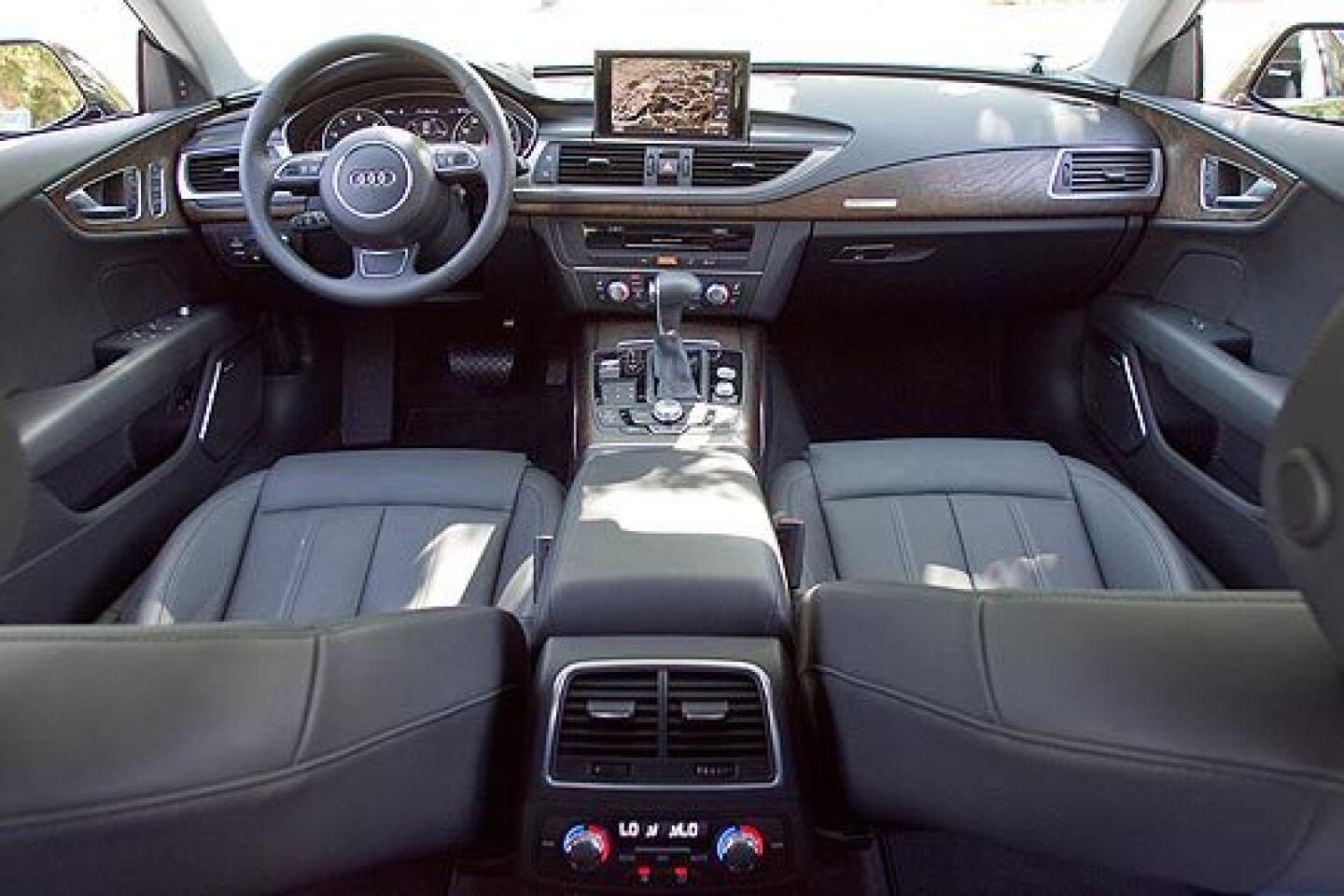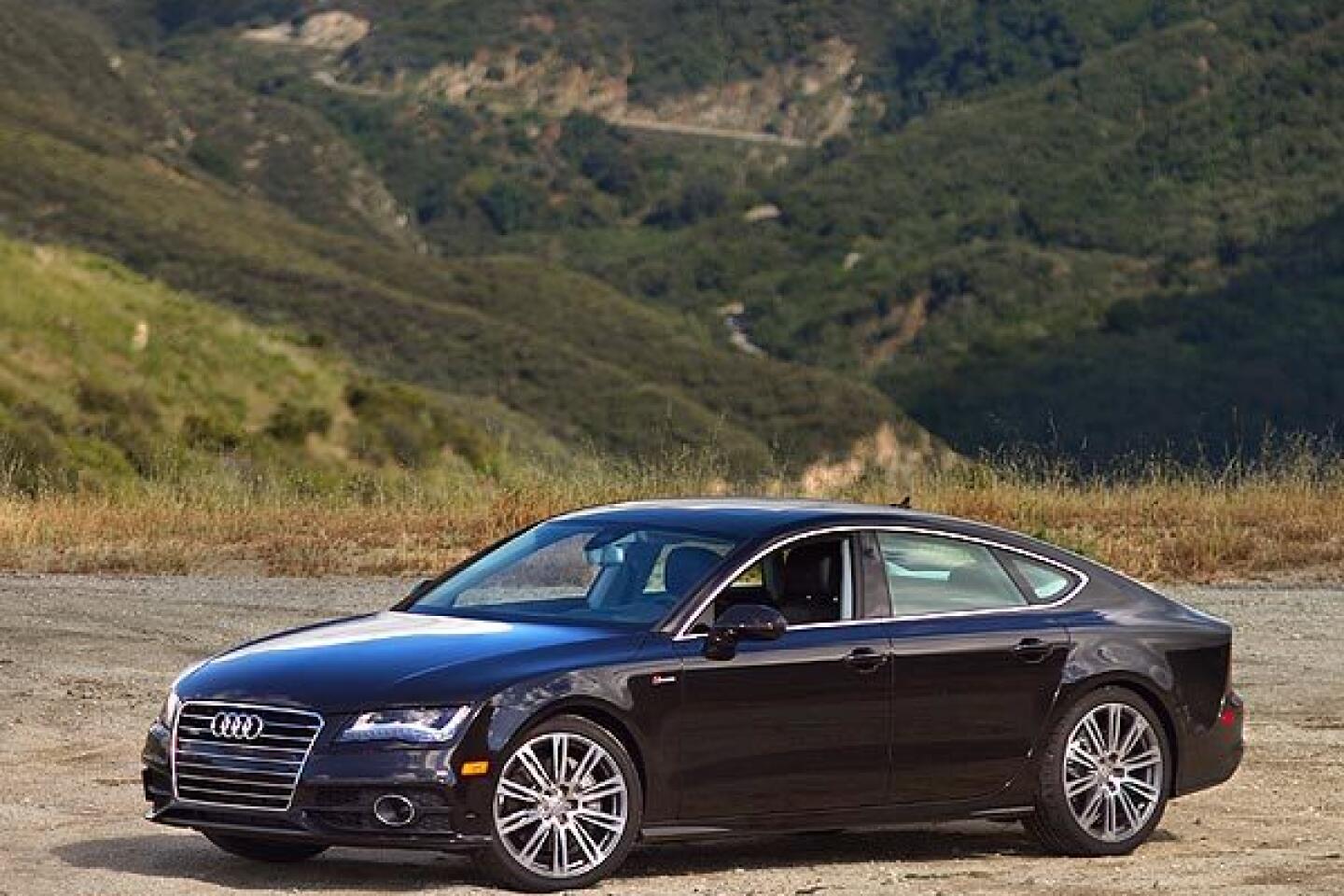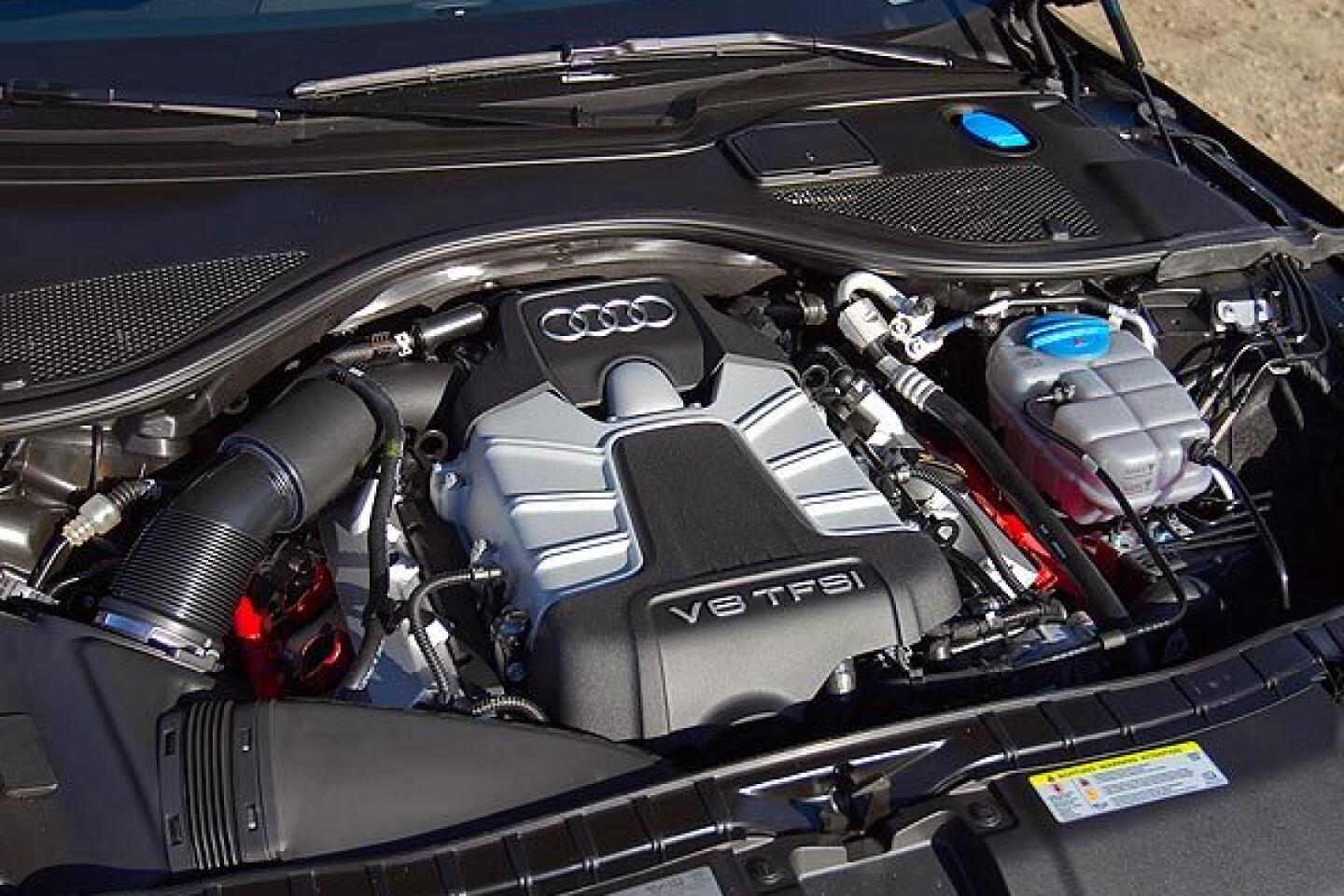2012 Audi A7 has power, tech and a style that draws double takes
A businesswoman in the parking garage was the first. The next day it was a landscaper at the gas station. Then the balding guy in the convertible, top down. Over the weekend it was four older women coming from brunch.
They did a double take.
Perhaps they liked the curved silhouette, quiet grace and low-slung stance of the full-size hatchback I was driving. Or maybe they found the car’s profile and abrupt rear end excessive, awkward and dominantly avant-garde and wrote it off as just another “look at me” conveyance of narcissism.
But they looked at the 2012 Audi A7. Twice.
And this may be why people will buy this Sportback-hatchback-coupe-sedan thingy. Perhaps because they find Audi A6 too boring or the Porsche Panamera V-6 too costly and lacking the visual panache. Whether you adore or abhor the A7, you can’t help but look at it.
The A7 is the expressive alter ego to the more staid 2012 A6 that it is based on. But looking at the A7, there’s no doubt it’s an Audi.
At the front, the prominence of the trapezoidal grille is matched only by the drama of the daytime-running LED lights, which drop from below the hood and give the A7 the face of a stoic feline.
Viewed in profile, the frameless doors and overall greenhouse of the A7 look compressed from the A6. The roof begins to curve downward slowly at the B-pillar between the front and rear doors and continues its long stretch until it ends abruptly at the rear of the car.
The bulk of that curve, from behind the rear passengers’ heads to the tail of this Audi, is one large rear hatch that swings opens at the touch of a button to reveal 24.5 cubic feet of trunk space.
And swing it will; because the hatch is so long, it swings unfortunately high when open. Hypothetically, a man could pop the hatch in the parking garage of his gym only to have it swing up and smack into the ceiling, putting a small chip in the Havanna Black Metallic paint and precipitating a torrent of easy-to-spell words from him. Hypothetically.
But a more ominous consequence of this large rear hatch is that it gives the last third of the A7’s profile a heavy, almost burdensome appearance before abruptly being cut off at the end of the car.
The look would have been more compelling if Audi designers had stuck a bit more of a horizontal trunk lid at the end of the hatch to balance out the front. One has only to reference the A5 Sportback (which, sadly, is not available in the U.S.) to see that it’s possible to have a four-door hatchback with more handsome proportions.
On the road, the wide and low stance of the A7 makes it particularly engaging for its size. The steering and throttle have three modes of adjustment, with the middle setting, Auto, not surprisingly the most balanced.
The standard Quattro all-wheel-drive system provides its usual tenacious grip, aided on my test car by the $1,500 sport package, which gives buyers 20-inch wheels wrapped in extra-sticky performance tires, a sport suspension and shift paddles to manually row the eight-speed automatic transmission.
Daily driving had me reconsidering this package, however, because the suspension often seemed too harsh on rough roads and potholes and the tire/wheel combination transmitted excessive road noise into the cabin.
Moving the A7 is a 3.0-liter supercharged engine that is simply resplendent as it doles out 310 horsepower and 325 pound-feet of torque, getting the 4,200-pound car from zero to 60 mph in 5.4 seconds.
Gas mileage is rated at a respectable 18 miles per gallon in the city and 28 mpg on the highway. In over 600 miles of driving, I averaged 25.1 mpg, though on long stretches of freeway I could easily hit 28 mpg.
Unlike the A7’s closest competitor, Mercedes-Benz’s CLS550, no V-8 is available right now in the Audi. It’s likely, however, that the company will unveil an S7 variant sometime in the future that will almost certainly have V-8; probably a mean one.
What is available in the A7 now is a surprising amount of technology, though you’re going to have to pay for it.
My loaded, $80,130 tester came with the $5,800 “innovation package.” It includes an adaptive cruise control system that can automatically take the car down to a full stop in traffic, night vision that displays in a screen between the speedometer and tachometer, and a collision-avoidance system that applies the brakes if it senses you’re approaching an object too quickly.
Meanwhile, the $6,330 upgraded “prestige package” includes a navigation system that uses real-time Google Earth and Google Traffic, a Wi-Fi connection for eight devices and a Bose sound system.
Now, if only the A7 had been able to steer itself, I could have spent my week in the back seat playing Portal 2 and live-streaming Netflix to my laptop. Finally, my tester had the $5,900 Bang & Olufsen stereo system. That alone is nearly 10% of the A7’s base price of $60,125. Yes, the sound coming from the 15 speakers was so clear and crisp you could hear the artist blink. But that’s still a sizable expense; imagine a $1,600 stereo option on a Ford Fiesta.
Plenty of ink has been used extolling the virtues of Audi’s interiors. This one is no different, so I’ll spare you the adulation. I will point out that the company seems unnecessarily beholden to marketing this car as a four-door coupe. So much so that it has eliminated the middle seat in the rear and in its place installed a simple plastic bin.
Audi’s line is that anyone needing to transport five people won’t buy the A7. Maybe. But you have to think at least one potential customer is going to look at the rear seat and find this disdain for practicality a deal-breaker. Especially when Audi markets the hatchback design in terms of its usefulness.
After a week of driving this car, I didn’t feel differently about the styling — the profile of the A7 still seems unbalanced and slightly awkward. But drivers and passengers can’t help but appreciate the classy and ever-so-rebellious way the Audi A7 eschews the traditional high-end sedan.
A week of double-takes will do that to you.
david.undercoffler@latimes.com







